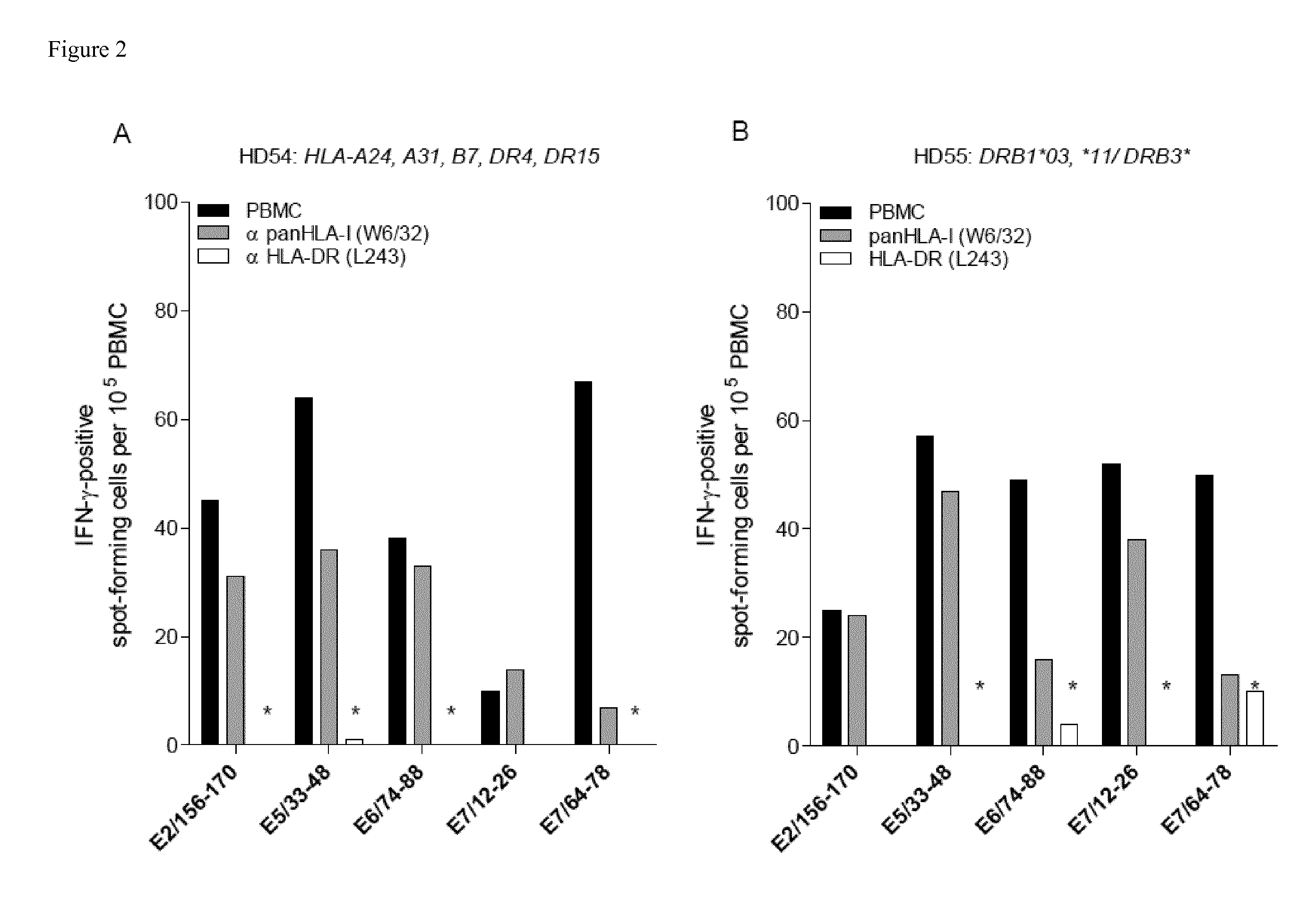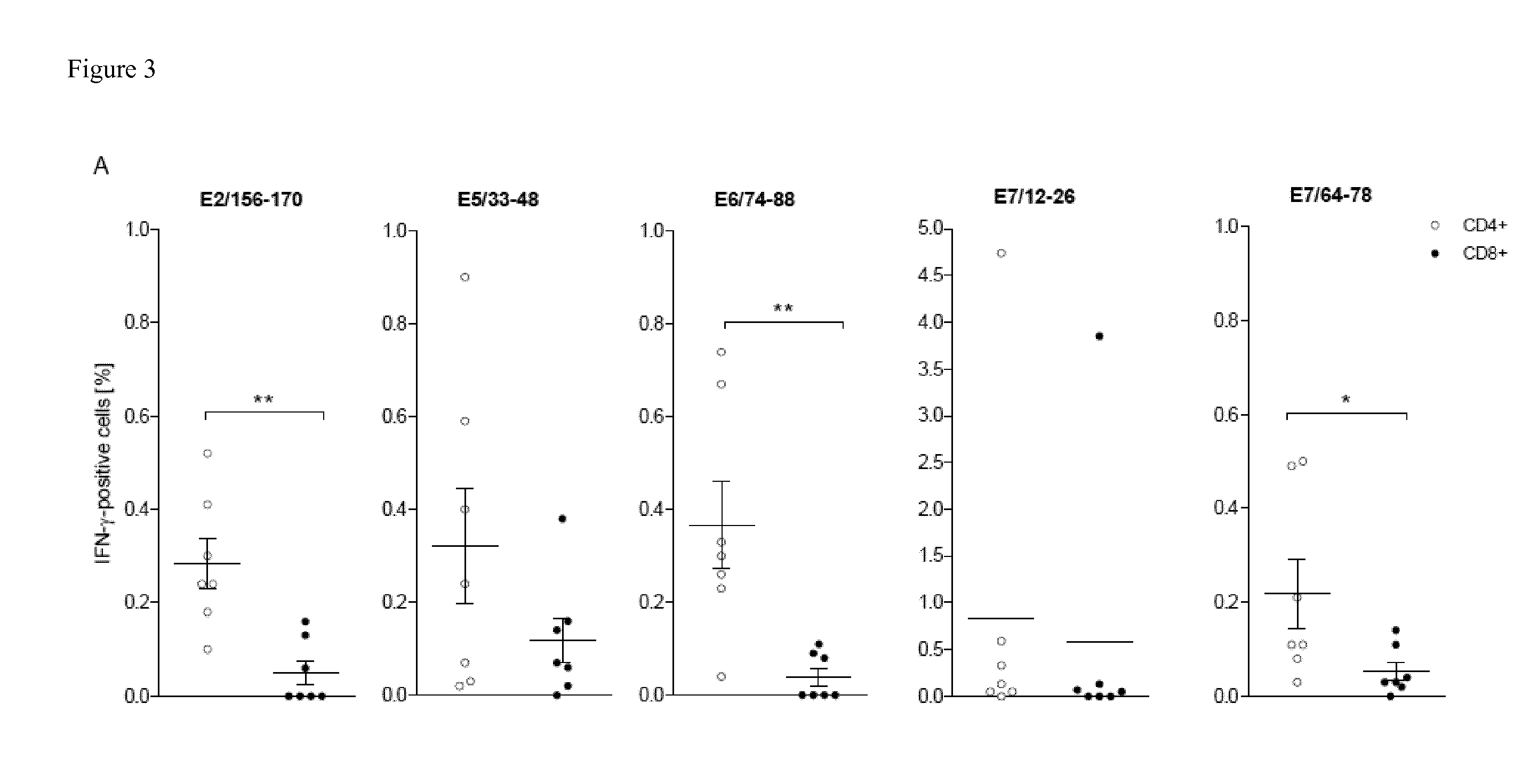Novel Promiscuous HPV16-Derived T Helper Epitopes for Immunotherapy
a technology of promiscuous hpv16 and immunotherapy, which is applied in the field of promiscuous hpv16-derived t helper epitopes for immunotherapy, can solve the problems of disappointing clinical outcomes, expensive and time-consuming approaches to systematic t cell epitope mapping, and insufficient clinical success of cytotoxic cd8+ t cells
- Summary
- Abstract
- Description
- Claims
- Application Information
AI Technical Summary
Benefits of technology
Problems solved by technology
Method used
Image
Examples
Embodiment Construction
[0071]Materials and Methods
[0072]Prediction of Promiscuous HLA Class II-Binding HPV-Derived Epitopes
[0073]An epitope prediction server, SYFPEITHI (http: / / www.syfpeithi.com) (39) was used for predicting 15-mer Th epitopes in E7 (GenBank: AAD33253.1), E6 (GenBank: AAD33252.1), E5 (GenBank: AA085413.1), and E2 (GenBank: AAD33255.1) proteins of HPV16. The in silico predictions were performed for multiple HLA-DR molecules encoded by DRB1*0101, DRB1*0301,DRB1*0401, DRB1*0701,DRB1*1101 and DRB1*1501 alleles. Higher binding score values indicate higher predicted binding affinity of candidate peptides to the selected HLA-DR allele. To identify promiscuous CD4+ T cell epitopes, for each protein, candidate peptides were ranked according to their predicted binding affinity among the indicated HLA-DR alleles, excluding epitopes harboring more than two cystein residues. Peptides predicted to bind at least five HLA-DR molecules were selected. In addition, HLA-DR binding epitopes were analyzed for ...
PUM
| Property | Measurement | Unit |
|---|---|---|
| Fraction | aaaaa | aaaaa |
Abstract
Description
Claims
Application Information
 Login to View More
Login to View More - R&D
- Intellectual Property
- Life Sciences
- Materials
- Tech Scout
- Unparalleled Data Quality
- Higher Quality Content
- 60% Fewer Hallucinations
Browse by: Latest US Patents, China's latest patents, Technical Efficacy Thesaurus, Application Domain, Technology Topic, Popular Technical Reports.
© 2025 PatSnap. All rights reserved.Legal|Privacy policy|Modern Slavery Act Transparency Statement|Sitemap|About US| Contact US: help@patsnap.com



